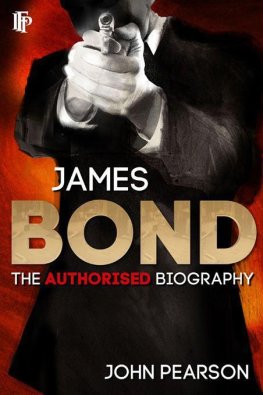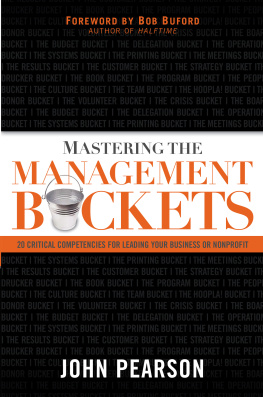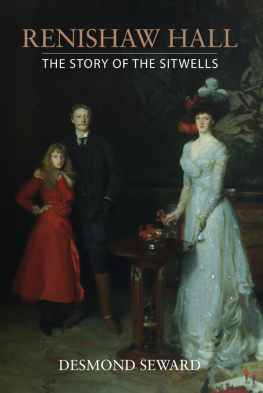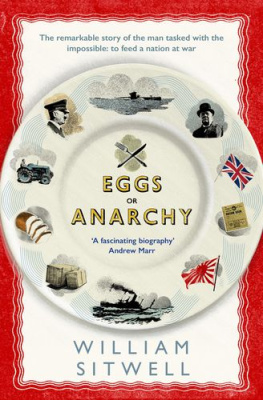John Pearson - Facades: Edith, Osbert, and Sacheverell Sitwell
Here you can read online John Pearson - Facades: Edith, Osbert, and Sacheverell Sitwell full text of the book (entire story) in english for free. Download pdf and epub, get meaning, cover and reviews about this ebook. year: 2016, publisher: Audible Studios on Brilliance Audio, genre: Non-fiction. Description of the work, (preface) as well as reviews are available. Best literature library LitArk.com created for fans of good reading and offers a wide selection of genres:
Romance novel
Science fiction
Adventure
Detective
Science
History
Home and family
Prose
Art
Politics
Computer
Non-fiction
Religion
Business
Children
Humor
Choose a favorite category and find really read worthwhile books. Enjoy immersion in the world of imagination, feel the emotions of the characters or learn something new for yourself, make an fascinating discovery.
- Book:Facades: Edith, Osbert, and Sacheverell Sitwell
- Author:
- Publisher:Audible Studios on Brilliance Audio
- Genre:
- Year:2016
- Rating:3 / 5
- Favourites:Add to favourites
- Your mark:
- 60
- 1
- 2
- 3
- 4
- 5
Facades: Edith, Osbert, and Sacheverell Sitwell: summary, description and annotation
We offer to read an annotation, description, summary or preface (depends on what the author of the book "Facades: Edith, Osbert, and Sacheverell Sitwell" wrote himself). If you haven't found the necessary information about the book — write in the comments, we will try to find it.
Facades: Edith, Osbert, and Sacheverell Sitwell — read online for free the complete book (whole text) full work
Below is the text of the book, divided by pages. System saving the place of the last page read, allows you to conveniently read the book "Facades: Edith, Osbert, and Sacheverell Sitwell" online for free, without having to search again every time where you left off. Put a bookmark, and you can go to the page where you finished reading at any time.
Font size:
Interval:
Bookmark:
Edith, Osbert, and Sacheverell Sitwell
JOHN PEARSON
I never in my life saw such a strong,
strange family complex: as if they were
marooned on a desert island, and nobody
in the world but their lost selves. Queer!
D. H. Lawrence to S. S. Koteliansky

IN a sense, this biography began when I trod on Sir Osbert Sitwels toe at the big post-war exhibition of Mexican Art at the Tate Gallery in London. I was a schoolboy at the time, and this was my first physical contact with a literary celebrity. I recognised him instantly from his photographs in the press Great Morning had only recently appeared and from his gleaming brass bust by Dobson, which in those days was the brightest object in the section of the gallery devoted to modern British art. But as I stammered an apology, I was horrified by the look of anguish on the face of this distinguished writer. Too young to comprehend the agonies of gout from which he was tormented at the time, I remained puzzled for a long time afterwards by this image of such extraordinary suffering. It haunted me as I meandered through the bland and stately pages of his autobiography and gave me, I imagine, my first inkling that for all its massive length, the book revealed only what its author wanted to appear. I sensed a mystery, but had no idea what it really was, or why.
The mystery deepened for me as I read the other Sitwells. All three of them shared what Edith somewhat regally described as the remote air of a legend, and the legend puzzled me. What was it, and why did they evidently feel the need of it? How had this trio managed to become a legend early in their lifetime, and what lay behind it? Like the great majority of the Sitwells readers and admirers, I had no idea, and finally forgot about it.
Then in the summer of 1973 the mystery suddenly revived, for me at any rate, when my friend, the late Leonard Russell of the Sunday Times, suggested Osbert Sitwell as the subject of a long article for the paper. I was in Florence at the time. Sir Osbert had been dead for just over five years, and by a strange coincidence, soon after Leonards suggestion arrived, I heard some Italian friends discussing the famous Sitwell castle at Montegufoni which I had once read about in the pages of Great Morning. It was for sale. Apparently Sir Osberts heir could not afford to run it, and there were rumours that an Italian was in process of acquiring it. Gossip inevitably followed in the best Florentine manner chiefly about the price and how the deal was progressing but also about the various members of the family who had lived there. One of the Italians knew someone who had visited Sir Osbert at the house not long before he died, and someone else remembered the eccentric Sir George Sitwell there before the war.
And does anybody live there now? I asked.
Good Heavens, no! The place is empty and neglected. Why dont you go and have a look if youre so interested.
I did, a few days later, driving some twenty kilometres up the historic Via Volterrana from the edge of Florence and finding the enormous castle just beyond the little village of Montagnana, like some Tibetan lamasery set on its private hill. It was forbidding and at first sight seemed entirely closed up, but it was not completely uninhabited. As I drove up the drive a small man in dark glasses stopped my car and asked me what I wanted. I explained, and he replied in English that it was impossible to see the castle as it had just been sold, but that if I was really interested in Sir Osbert Sitwell, there was a chance that he could help me. He introduced himself. His name was Frank Magro, and he had been the great mans secretary and companion for the last years of his life. He had a small flat in the castle and hospitably invited me up to have a drink. He talked about the last years Sir Osbert spent here in the castle as a virtual recluse, and the dramas that ensued upon his death; and as he talked I was back with the mystery that had always puzzled me about the Sitwells. Why should the author of Great Morning have ended up like this?
There was no simple answer. For as I soon found out, the truth about Sir Osberts retirement and death was inextricably bound up with much that lay behind the complex Sitwell legends of the past. Not for nothing had Dame Ediths best-known work been called Faade, and I decided there and then to find what really lay behind the various faades Sir Osbert and Dame Edith had assiduously erected in their lifetime.
I discussed this with one of Sir Osberts most devoted friends, Sir Harold Acton. He gave me a number of invaluable clues, but also warned me of the enormity and hazards of the task the vastness of the Sitwells literary output, the range of their friends and enemies, and certain matters here he smiled with ineffable discretion which were bound to be shall we say, slightly touchy?
While still in Florence I saw the remaining few who had seen Sir Osbert just before he died, the former British Consul, Christopher Pirie Gordon, the head of the British Institute and founder of the Oxford Sitwell Society, Ian Greenlees, and the priest who saw him on his deathbed and conducted the funeral service, the Rev. George Church, vicar of the Anglican Church of St Marks. Then I returned to London to begin what would turn out to be practically four years obsessive work.
Here I must put on record the invaluable assistance of the many other people, including friends and enemies of the Sitwells who helped me: the Dowager Lady Aberconway, A. Alvarez, Lorna Andrade, Sir Frederick Ashton, Francis Bamford, Sir Cecil Beaton, Sir Basil Blackwell, Hugh Burnett, Father Philip Caraman, Major J. W. Chandos-Pole, Lord Clark, Serafina Clarke, Cyril Connolly, Lady Diana Cooper, Father Martin DArcy, Alan Dent, Rache Lovat Dickson, Geoffrey Elborn, Constantine FitzGibbon, James and Minnie Fosburgh, Philip Frere, Sir John Gielgud, Martin Gilbert, Michael Goodwin, Geoffrey Gorer, Geoffrey Grigson, Sir Alec Guinness, Robert Heber-Percy, Peter Holling-worth, Viva King, Lincoln Kirstein, Professor Desmond Laurence, Dr Frank Leavis, John Lehmann, Cole Lesley, Jack Lindsay, Lady Lindsay, Nancy Luscher, Harold Macmillan, Dan Maloney, Delveo Molesworth, Dr Patrick Moore, Sheridan Morley, Angus Morrison, Raymond Mortimer, Beverley Nichols, John Piper, Alan Pry ce-J ones, Peter Quennell, Kathleen Raine, John Russell, Elizabeth Salter, Hugo Southern, John Sparrow, Mrs Adrian Stokes, Claire Sutton, Julian Symons, Herbert van Thai, Sir William Walton, Glenway Wescott, Dame Rebecca West, Monroe Wheeler, Gillian Widdicombe.
David Hardman gave me an invaluable collection of early press material on the Sitwells, Sybille Bedford and Maurice Richardson gave me sage advice on the Sitwells relationships with Aldous Huxley, Anne Olivier Bell provided quotations from Virginia Woolfs diaries while they were yet unpublished, and that most generous of London booksellers Anthony Rota actually lent me several early Sitwell rarities.
I must also thank the Sitwell family. It was clear from the beginning that none of us wished this to be an authorised biography, but I received most generous help from Sir Sacheverell and Lady Sitwell, who invited me to Weston and answered my interminable questions with infinite courtesy and patience. So did their son, Reresby, and his wife Penelope, who let me stay at Renishaw while their second son and daughter-in-law, Francis and Susannah, were an invaluable source of information on Dame Edith. To Francis Sitwell, Dame Ediths literary executor, I am particularly indebted for permission to quote from her works. I am all too well aware that this is not necessarily the book that they would all have liked, but far from hindering me in any way, they have given me much encouragement and sympathy.
Font size:
Interval:
Bookmark:
Similar books «Facades: Edith, Osbert, and Sacheverell Sitwell»
Look at similar books to Facades: Edith, Osbert, and Sacheverell Sitwell. We have selected literature similar in name and meaning in the hope of providing readers with more options to find new, interesting, not yet read works.
Discussion, reviews of the book Facades: Edith, Osbert, and Sacheverell Sitwell and just readers' own opinions. Leave your comments, write what you think about the work, its meaning or the main characters. Specify what exactly you liked and what you didn't like, and why you think so.








